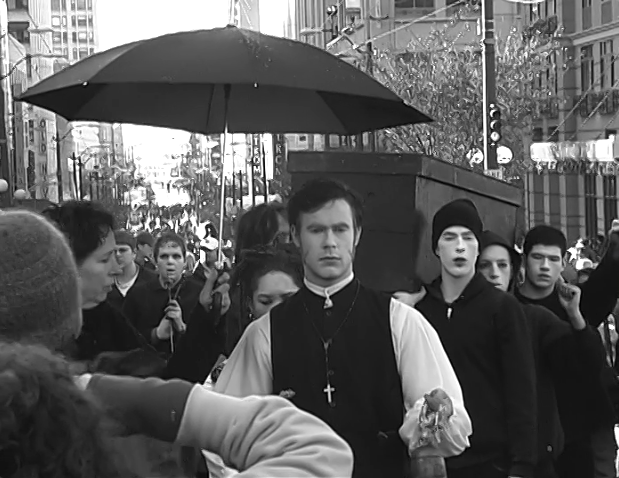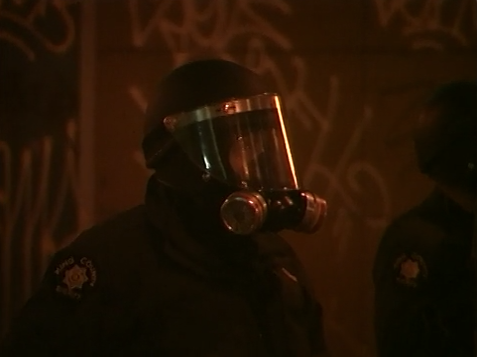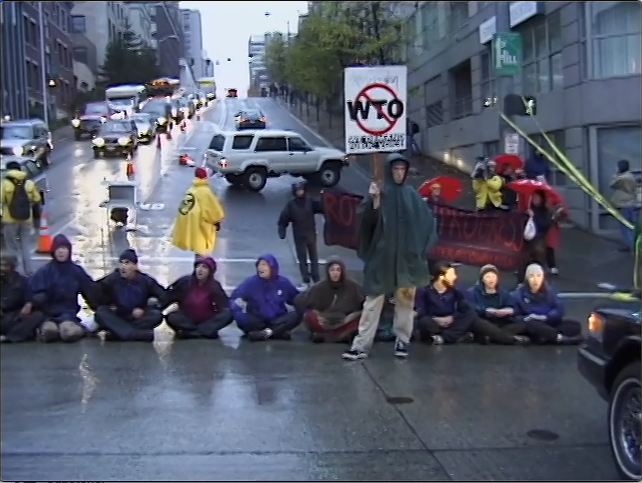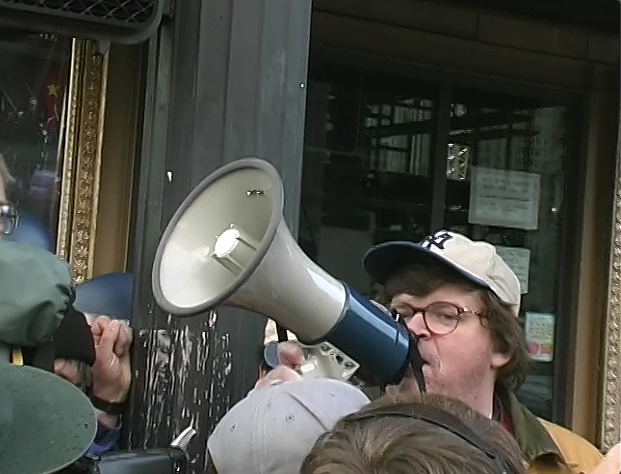IMC World Trade Organization Meeting and Seattle Protests Collection
Video recordings and logbooks created by filmmakers and activists during the November 1999 protests against the World Trade Organization (WTO) meeting in Seattle, Washington. The video recordings from the Independent Media Center (IMC) collection offer a unique perspective into a historic moment that brought together grassroots activists, labor leaders, environmentalists, farmers, anarchists, and artists who made history and shaped social justice movements around the world.
The Independent Media Center World Trade Organization video recordings and log books, 1999 consists of over 400 hours of recordings on BetaSP, MiniDV, DAT, DVCam and VHS tape, but only a handful of files are made available in this database due to privacy and copyright concerns related to the materials. The entirety of the collection can be viewed in the Reference Room in Special Collections in the University of Washington Allen Library on the Seattle campus.
From the Collection Guide
In November 1999, the World Trade Organization (WTO) Ministerial Conference was held in Seattle. It was intended to be the launch of a new millennial round of trade negotiations. Concerns over economic globalization prompted a series of large-scale protests with 400,000 people filling the streets of the city, representing an array of causes, from labor to the environment. During the nearly nine month mobilization in 1999, local and national non-governmental groups representing a variety of interests determined how to publicize the threat posed by the WTO and how to frame their messages to attract the attention of the public, the media and the WTO itself. The lengthy and often contentious mobilization process led to a six-week period immediately preceding the protests during which activists prepared themselves and the public with public teach-ins, training, and debates.
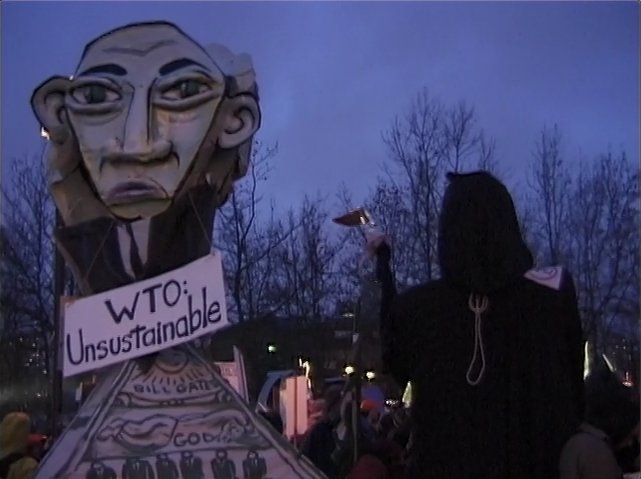
Large Street Puppets: "WTO Unsustainable"
On November 30, 1999, first day of the ministerial meetings, thousands of largely peaceful protestors blocked delegates’ entrance to the opening plenary session. According to press reports, Seattle police in riot gear responded by releasing volleys of tear gas and pepper spray at 10:00 am and continued to do so throughout the day. The police eased up when the 20,000-member labor march reached the downtown core from the Seattle Center, where a large rally had been held. WTO officials cancelled the opening ceremonies. At a time difficult to verify after the fact, Mayor Paul Schell declared a civil emergency, ordering streets to be cleared by 7:00 pm and imposing a curfew on a large area of downtown, from Yesler Way to Denny Way and from Interstate 5 to Elliott Bay. Word of the curfew reached people on the streets at about 4:00 pm. Some dispersed, but others remained and were herded out of downtown by police firing tear gas and pepper spray. At approximately 10:00 pm the State Patrol reinforced the police. Scattered vandalism and looting of several downtown businesses had occurred during the day.
Early the following day, Wednesday, December 1, Seattle police established a ‘demonstration-free zone’ around the WTO meeting site at the Seattle Convention and Trade Center. They severely restricted access to the area, but protests continued. The ministerial meeting was shut down for five hours that day. Governor Gary Locke sent additional State Patrol troopers and two National Guard units to relieve and assist the Seattle police. Clashes between protesters and police spilled over in the evening to Capitol Hill, east of downtown. By then the focus had shifted somewhat, away from the WTO and towards the police response to the protests. Several hundred protesters were arrested, and other protesters demonstrated outside the King County Jail.
The following day the Mayor’s Office reduced the size of what it called a ‘limited curfew zone’ to the area bounded by Fourth Avenue, Pine Street, Boren Avenue, Seneca Street, and Interstate 5. Some protests were staged on Friday, especially inside the convention center. Protestors demonstrated outside the King County jail again on Friday evening. Eventually charges were dropped against most of the over 400 people arrested.
About the Database
“Digitizing the Independent Media Center World Trade Organization Videotape Collection” was supported by a Recordings at Risk grant from the Council on Library and Information Resources (CLIR). The grant program is made possible by funding from The Andrew W. Mellon Foundation.
The collections were donated in 2020 by IMC co-founder Jill Freidberg who was the caretaker of over 300 hours of videotape.
Videotapes were digitized to a 10-bit uncompressed FFV1 version 3 file in a Matroska container or an 8-bit raw DV stream. Streaming files are H.264 MPEG4 AVC. Files were reformatted from BetaSP, MiniDV, DAT, DVCam and VHS using BlackMagic encoding software. Digitized videotapes were imported into Final Cut Pro to add titles, watermarks, and captioning, then exported to Handbrake, and transcoded to mp4s and linked with descriptive metadata.

